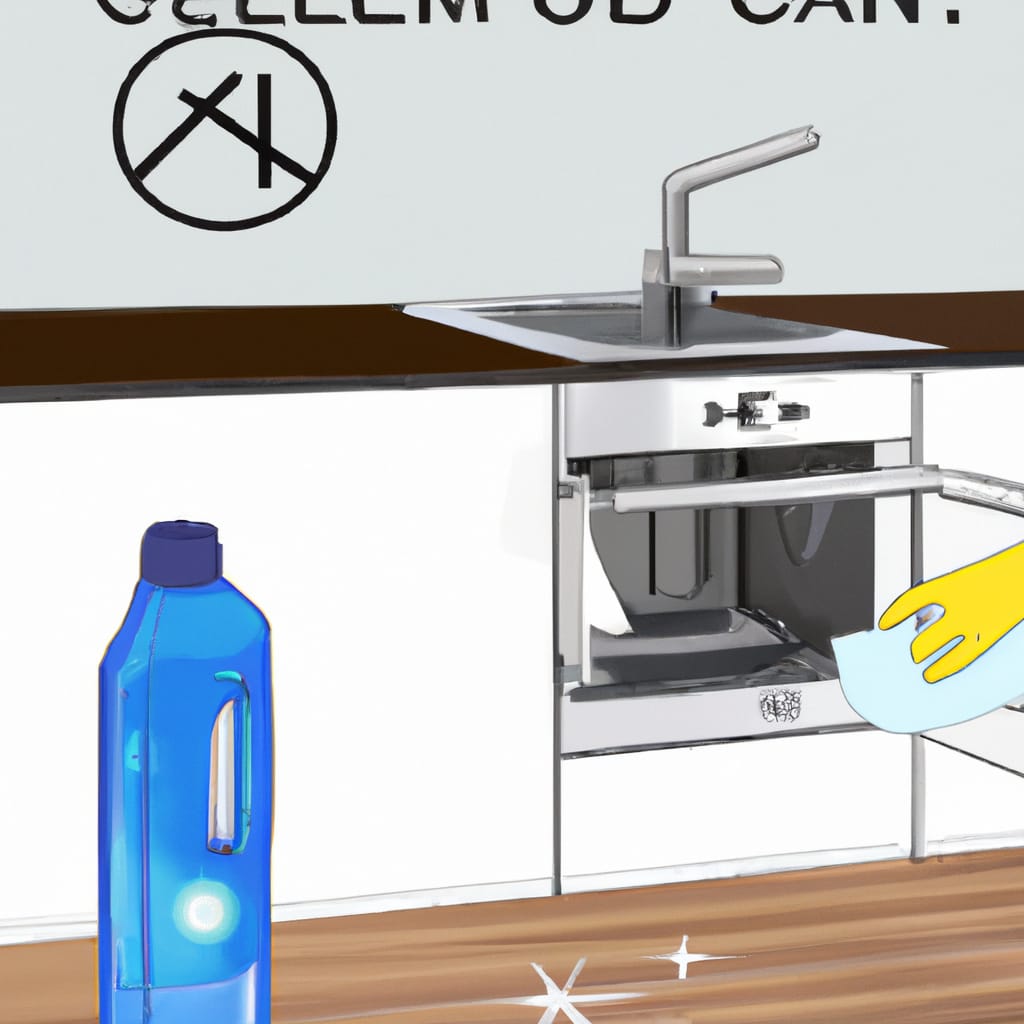Are you tired of seeing unsightly oil stains on your kitchen cabinets? Don’t worry! With a few simple steps and some elbow grease, you can easily clean off those greasy stains and make your cabinets look good as new. Follow this guide to learn how to efficiently clean oil stains from your kitchen cabinets!

What kind of oil caused the stain?
The oil that caused the stain is most likely a petroleum-based oil, such as motor oil, cooking oil, baby oil, or something similar. Petroleum-based oils are made up of hydrocarbons, which are molecules that contain hydrogen and carbon atoms. These molecules are very small and can easily penetrate fabrics, such as clothing, carpets, and upholstery, which makes them difficult to remove. Petroleum-based oils are also very slow to evaporate, which makes them more likely to leave a residue and cause a stain.
What supplies will you need to clean the stain?
To clean a stain, you will need a few supplies. First, you will need a cleaning product specifically designed to target the type of stain you are dealing with. This could be a laundry detergent, carpet cleaner, or a chemical product. Second, you will need a rag or paper towel to use for blotting the stain. Third, you will need a brush to help work the cleaning product into the stain, if necessary. Fourth, you will need a bowl or bucket of warm water to help rinse the area. Finally, you will need a cloth or paper towel to help dry the area after the cleaning process is finished. When using chemical products to clean a stain, it is important to always read and follow the instructions on the label, and to wear protective gear such as gloves and a face mask.
How should you prepare the area for cleaning?
The first step in preparing an area for cleaning is to remove clutter and debris. This includes anything that is not necessary for the cleaning process, such as furniture, decorations, and other items. Once the area is cleared, it is important to sweep or vacuum the floor to remove dirt and debris. If the area is carpeted, a vacuum with a brush attachment is recommended. Once the area is free of debris and dirt, it is important to determine what type of cleaning solution is needed. Depending on the type of surface being cleaned, different cleaning solutions may be necessary. It is also important to prepare any necessary cleaning tools, such as mops, cloths, sponges, and scrubbing brushes. After the area is prepared, the cleaning process can begin.
What is the best method for cleaning the oil stain?
The best method for cleaning an oil stain depends on the type of material the stain is on. On clothing, blotting the stain with warm, soapy water is usually the best approach. If the stain is particularly stubborn, a laundry pre-treatment product can be used. For carpets and upholstery, blotting the stain with a cloth dampened with warm, soapy water can help to remove some of the oil. Vinegar and baking soda can be used as an alternative to soap to help break down the oil. For hard surfaces, like countertops and floors, a degreasing cleaner should be used to help break down the oil. For all surfaces, use a clean, dry cloth to blot away as much of the oil as possible.
How should you rinse and dry the area after cleaning?
After cleaning the area, it is important to rinse to remove any remaining cleaning solution from the area. This can be done with warm water and a soft cloth. Afterwards, take a dry cloth and gently pat the area dry. Make sure to thoroughly dry the area in order to prevent any streaks or stains from forming. Additionally, if the area is still wet, use a fan to help speed up the drying process. Once the area is completely dry, it should be free of any dirt, grime, or debris.
What should you do if the stain persists?
If the stain persists, it is important to try different cleaning methods. Depending on the type of stain, applying a detergent solution, vinegar, or baking soda may help to remove it. For tougher stains, applying a pre-treater or using a steam cleaner may be necessary. If the stain still persists after trying all of these methods, it may be necessary to contact a professional carpet cleaning service.
Are there any tips to prevent future oil stains?
Oil stains can be difficult to remove once they have set in, so prevention is key. Here are some tips to help prevent oil stains: always clean up spills as soon as they happen, use absorbent materials such as sawdust, cat litter, or baking soda to soak up excess oil, avoid parking cars on oil-stained surfaces, treat concrete and other surfaces with a sealant to prevent oil penetration, and use oil absorbing mats and drip pans under engines and other machinery. Taking these precautions can help keep surfaces clean and oil-free.




